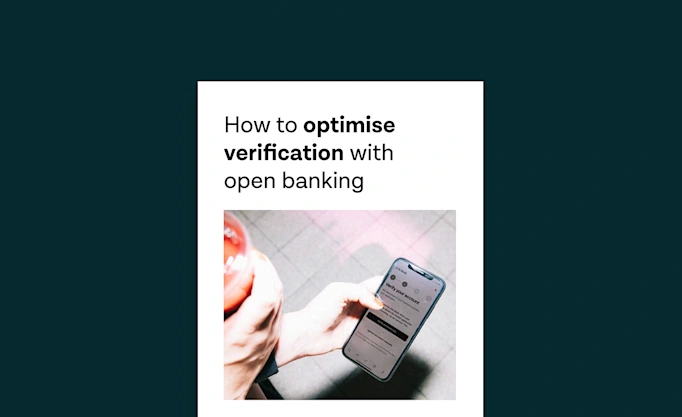Talking with Tinkers: how to build the PFM of tomorrow

How do you build the future of financial services? We had a chat with Tinkers Jon Nilsson and Henry Kupty from the finance management team to learn more about how they work to transform financial data into delightful user experiences. This is what they are doing to create value for leading brands and their millions of customers through personal finance management (PFM).
The finance management team has had years of experience in improving the PFM experience based on the feedback, behaviour and needs from consumers. After a lot of experimenting, learning and fine-tuning, they arrived at a proven concept. Now, their focus is on helping financial institutions to unlock the real value of data.
The building blocks of the tech they developed made it possible for Tink to scale – going from 500,000 Swedish app users to reaching millions of end-users across 18 countries.
We asked Engineering Manager Jon Nilsson and Software Engineer Henry Kupty to learn more about how they work, and their experience in building the PFM of tomorrow.
Who’s the team behind Tink’s PFM?
Henry: The finance management team consists of a great mix of software engineers, data scientists, engineering managers, product managers, and commercial people. Our strength is that we have a mix of skills, experiences, and backgrounds in the team.
Jon: That’s right, we highly value the team’s diversity of opinions and backgrounds. The finance management team acts as a mini-startup within the Tink organisation. It means that we have full ownership of our services from idea, design, and implementation. It also brings responsibility and creativity since we have a big part in developing our future products. But I also want to mention that we’re not the only team involved – we get a lot of help from other teams within Tink. All together we are 220+ engineers that are building the open banking platform, so we have a lot of experience and skills in-house.
How do you work?
Jon: We always strive to become more agile and better in our ways of working. In our current landscape, we need to be on our toes and keep finding better ways of doing things. So we as a team own our processes, and whenever we see a need to change or want to experiment we do so.
There’s always something to learn and we’re always looking to hire people who want to grow together with us as a team!
Henry: We also have weekly demos, where the whole company gets together to share new product releases, insights, best practices and fun facts. It’s a great way of celebrating achievements and keeping everyone in the loop.
Jon: A few times a year we also have hackathons, with 2-3 days packed with innovation, new ideas, and testing. During the years we’ve seen all kinds of outside-the-box solutions like charity apps, PFM in Minecraft and categorisation accuracy competitions. It’s a great way to encourage creativity, and it often leads to new product features that we implement.

Henry Kupty (left) and Jon Nilsson (right).
What’s the secret to building a successful PFM product?
Henry: It all starts with the user story. How do we build products that will simplify and help the end-user in their everyday life? We, as a team, always challenge how we’re solving customer problems and try to see it from different perspectives. And we debate a lot, I think that’s key.
Jon: You also need to unlock the real value of the data to build a successful PFM. To deliver personalised customer experiences, you need representative data. We turn transactions into smart data with the help of machine learning models.
In the next step, it’s important to present the data in a personal and understandable way for customers. And then make it easy for customers to act on the data. We’ve been fine-tuning our PFM for 8 years now, based on customer behaviour.
What are the latest trends in PFM?
Jon: Personalisation! The PFM experience should be so individual and dynamic for the user so it’s perceived as a coach or a virtual assistant that always has the customers back. There’s also more and more focus on machine learning and automation – how can we simplify people’s everyday life by being more predictive and data-driven?
Another trend is that people want to help save the planet, but they don’t have the right tools. There is a big potential for businesses to provide services with social and environmental value through PFM and enriched transactions. One example is Svalna, who uses Tink’s aggregation to create a carbon footprint calculator.
Can you tell us about some of your latest product launches?
Jon: We recently launched new actionable insights. The new insight model adapts after the user’s financial goals and behavior – so the insights are truly relevant.
We’ve also launched a new version of our saving goals, so the user gets better guidance to reach their goals. Now we can predict if a goal is reasonable and suggest adjustments.
Another big launch is that we finally can provide businesses with PFM mobile SDKs. This means our customers can save months of developer time with completely customisable SDKs. It’s a big step in helping our customers get a quicker time to market.
Tink’s PFM toolkit lets any business, big or small, to easily build smart and intuitive services that make finance management a more engaging experience. Get in touch with our team if you want to learn more.
Tink’s PFM offering – Money Manager – lets any business, big or small, to easily build smart and intuitive services that make finance management a more engaging experience. Get in touch with our team if you want to learn more.
More in Product

2025-02-06
6 min read
Introducing User Match: Built-in name verification to make security fast and easy
Discover how the latest feature of our verification products, User Match, is improving security by verifying users' names when adding bank accounts, reducing fraud and enhancing account protection.
Read more

2025-01-15
1 min read
Guide – How to optimise verification with open banking
Download our new account verification guide to learn how to streamline your operations, reduce risk, and enhance customer experience with the help of open banking-powered solutions.
Read more

2024-09-18
14 min read
Connecting the dots: how UX optimisations are driving success rates
We’ve previously explored small tweaks that get big results in open banking conversion rates. This deep dive drills further into how to reduce friction – and improve success rates through a fresh round of incremental changes in our UX.
Read more
Get started with Tink
Contact our team to learn more about what we can help you build – or create an account to get started right away.
